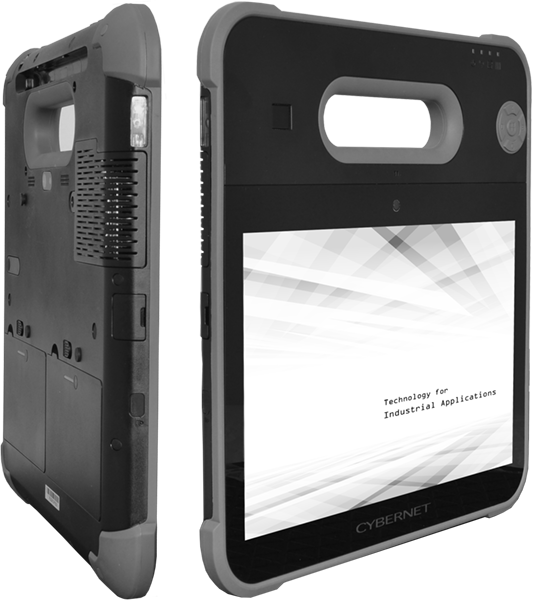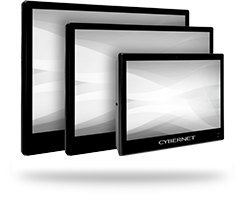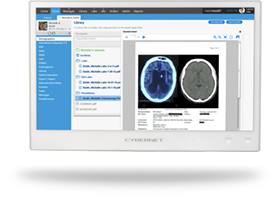One of the most pressing issues in cybersecurity is access control, which involves managing which users can access specific information and resources. The different types of biometric authentication can be used to verify users with information that is nearly impossible to falsify.
What are Biometrics?
Biometric authentication is the process of verification that relies on immutable characteristics of a person’s identity, such as the shape of the face, the color of their eyes, or the sound of their voice. These traits are wholly unique to every individual and extremely difficult to copy, making them ideal for access control cybersecurity.
Different Types of Biometric Authentication
Biometrics come in several different forms, each one targeting a different aspect of an individual for verification.
- Biological Biometrics: These are traits determined at a genetic level, such as an individual’s DNA. These are the most extreme, invasive, and time-consuming to measure, as they typically require the collection of a person’s body fluids or tissues. For this reason, biological biometrics are typically only used in extreme cases, such as criminal investigations.
- Morphological Biometrics: These are traits associated with the structure of an individual’s body and are influenced by both DNA and life experiences. This category includes eyes, fingerprints, and facial shape.
- Behavioral Biometrics: This category encompasses unique behavioral patterns, including a person’s speaking voice, walking pace, and typing habits. Of these, voice recognition is the most commonly used in cybersecurity.
The most commonly used biometrics in cybersecurity are:
Fingerprints
Every individual’s fingerprint is unique to them, thanks to both their DNA and the experiences they have had in life. This makes it an excellent method for verifying one’s identity. Additionally, fingerprint-scanning software can run off conventional capacitive touchscreen technology, making it easier to implement on devices like rugged industrial tablets.
A fingerprint scanner analyzes the patterns in an individual’s fingerprint, such as the ridges on the skin and more minor details within those ridges. Scanners capture the print, convert the physical pattern into a digital format, and then compare it to stored records. Scanners can use several methods to capture these details, such as optical (which takes a picture of the fingerprint), capacitive (which uses electrical currents to map fingerprints), and thermal (which detects subtle temperature differences between the ridges and valleys of the fingerprint).
Eye Scans (Iris and Retinal)
Similar to fingerprints, an individual’s iris and retina are unique to them and change very little throughout their life. Unless they suffer an accident or disease that affects them, your eyes will be the same from infancy to old age. For this reason, scanning a person’s iris (the ring of color in their eyes) and their retina (the dark spot in the center) are both viable methods for biometric authentication.
Retina scanning projects a beam of low-energy infrared light into an individual’s eye as they look into the scanner. The beam sweeps over the retina and measures the amount of light reflected back to it. Because retinal blood vessels absorb more light than the rest of the eye, they can be traced and identified to determine whether an individual matches an authorized one.
Iris scans work on a similar principle, where an infrared camera captures high-detail images of the subject’s iris and compares them to saved entries on a database. The extreme level of detail in these images, combined with the uniqueness of the iris, makes it nearly impossible to fool the system.
Voice Recognition
Voice recognition technology analyzes the rhythm, sound, and pattern of a person’s voice while they speak. Perfectly replicating someone’s voice is actually extremely difficult, as it is partially determined by the size and shape of their mouth and throat. Voice recognition software is trained on an individual’s voice by taking one or more samples and creating a digital template or “voiceprint” in the same vein as a fingerprint. By speaking into a microphone and matching their voice to the voiceprint on file, authorized users can gain access to sensitive information or valuable equipment.
Facial Structure
A facial structure scan measures the physical dimensions of a person’s face that cannot be easily changed by cosmetics or surgery. For example, a built-in camera can measure aspects like the space between a person’s eyes, the distance from their forehead to their chin, the shape of their cheekbones, and more. Because these factors are dependent on an individual’s bone structure, they are nearly impossible to alter or imitate.
Benefits of Using Biometric Authentication in Cybersecurity
Implementing biometrics for user authentication brings several benefits when compared to conventional access control methods, including:
Greater Accuracy
One common and reasonable concern that people have about biometric authentication is its accuracy, that it might misread details and lock out an authentic user. Thankfully, these fears are largely unfounded. For example, facial recognition scans can verify a person’s identity with 99.5% accuracy, and fingerprint scans achieve a score of 98% or better across multiple testing methods.
Greater Access Control
The problem with a classic password setup is that anyone with that password can use it to gain access, regardless of whether they should have it in the first place. A person’s iris, voice, or skull shape is nearly impossible to copy, meaning there will only ever be one example of that particular access method. This makes tracking and controlling access far easier for employers.
Difficulty in Spoofing
As repeatedly mentioned, biometrics are far more challenging to trick than a conventional password setup. A password-based system can be compromised through phishing, coercion, or simple negligence on the part of an employee. However, tricking a retinal scanner or fingerprint reader requires a level of expertise and resources that is far beyond the capabilities of most criminals to accomplish.
Passwordless Access
Let’s be honest for a moment: we’re all sick of passwords. We’re sick of remembering them, forgetting them, having to reset them, and then forgetting them all over again. The greatest benefit of biometric authentication for users is that their “password” is something they can never forget or misplace. Instead, they can access their equipment or data with a simple scan of their eye or a press of a finger. This removes a key point of failure in many cybersecurity systems, the chance of human failure or forgetfulness.
Challenges for Using Biometric Authentication
Like any new technology or workflow, using different types of biometric authentication comes with certain hurdles that must be overcome. When considering using biometrics in your cybersecurity efforts, consider the following issues:
Technology Integration
First and foremost is the question of integrating the technology that supports biometric authentication into everyday workflows. The cost of upgrading to these measures can be substantial; however, consider two key points. One, the average cost of a data breach is roughly $4.4 million, accounting for damages and lost productivity. Is it better to spend hundreds of thousands on new equipment, or millions dealing with a breach? Two, many modern computers, such as all-in-one medical PCs, can integrate features that also support biometrics, including capacitive touch screens, HD cameras, and high-quality microphones.
Database Development and Training
Obviously, using biometrics for authentication and security requires a deep, well-developed database of employees and their morphological information. This will require a period of record-taking and examination, which may involve retinal scans, fingerprinting, or creating voice samples. There will also need to be training and education for workers on how to use the technology effectively and to prevent false negatives.
Keeping Biometric Records Secure
As the metaphorical keys to the castle, biometric records must be kept exceptionally safe from intrusion or alteration. Your team must be well-educated in how to protect and secure this kind of data, such as using high-grade encryption to protect these records from prying eyes. You should also consider storing these records separately from any other type of information that can tie them to people’s full identities, such as names and addresses.
Biometric Authentication with Cybernet Computers
Utilizing various types of biometric authentication can significantly enhance the safety and security of a company’s data and operations. Integrating these measures may be a challenge, but the veracity that they add can be the difference between uninterrupted operations and a serious data breach.
If your company or healthcare group is exploring biometric authentication for its cybersecurity operations, contact Cybernet Manufacturing. Our panel PCs and tablets feature multiple capabilities that support biometric access control, including responsive touchscreens, built-in cameras, and more. Our experience as an original equipment manufacturer enables us to integrate biometrics with other forms of access control, such as RFID tags and smart cards, for robust multifactor authentication.


